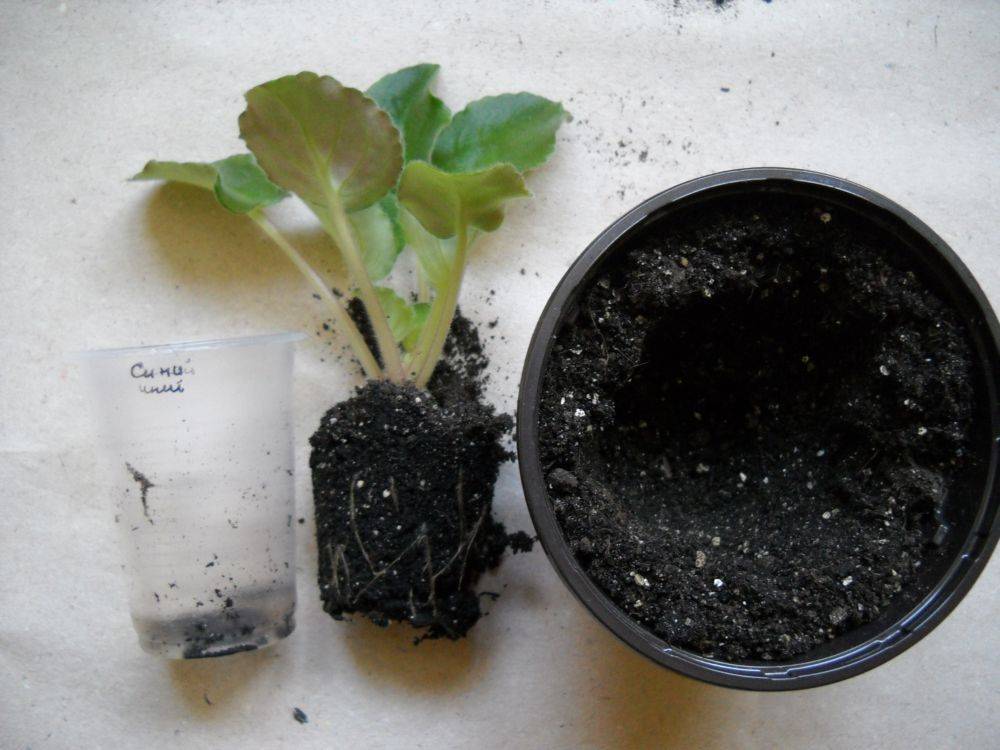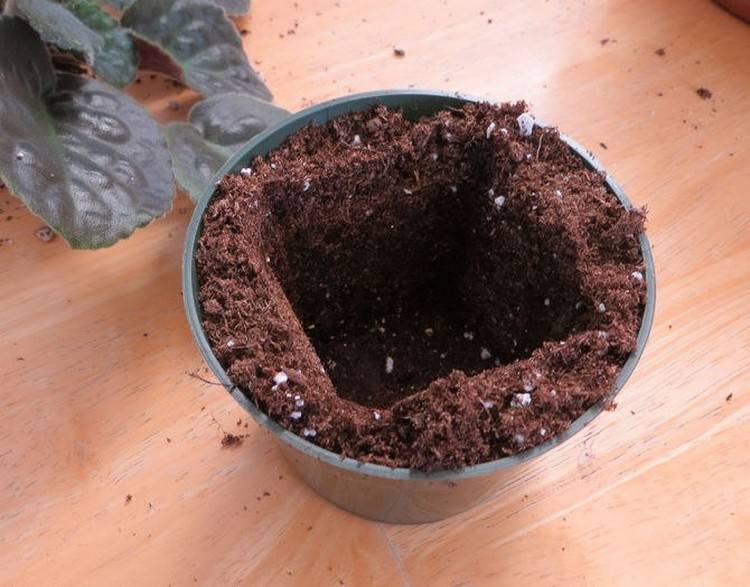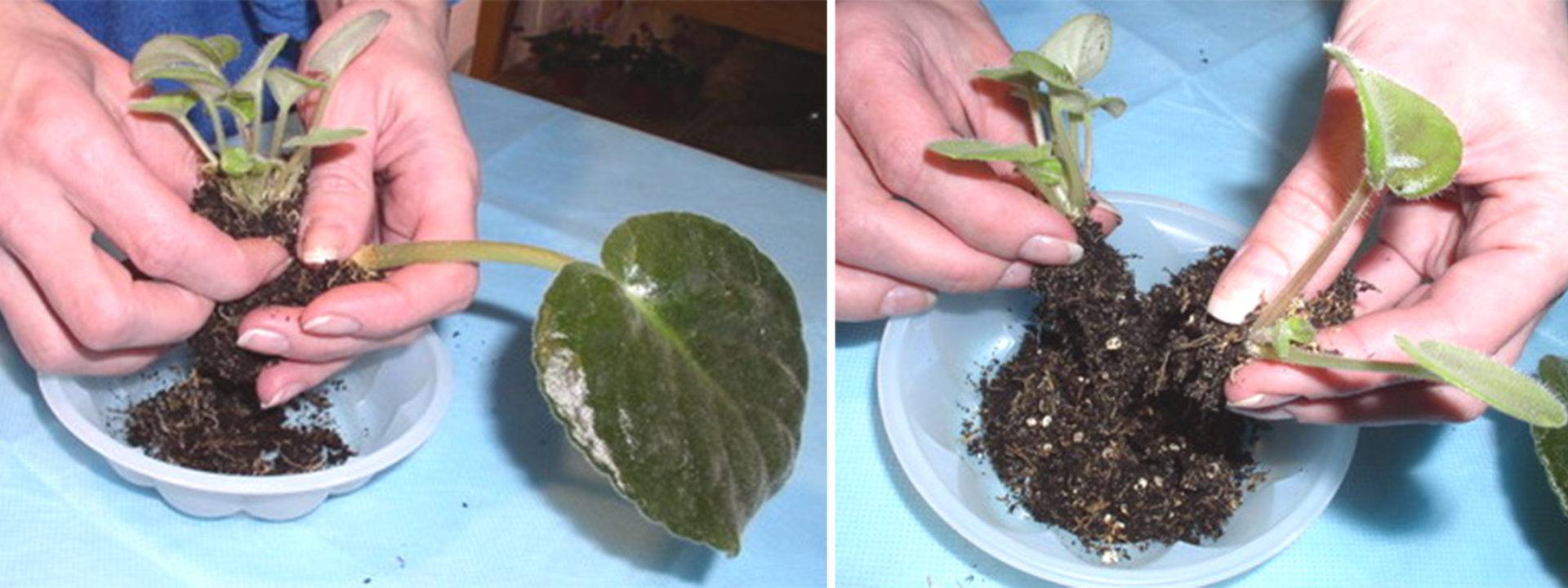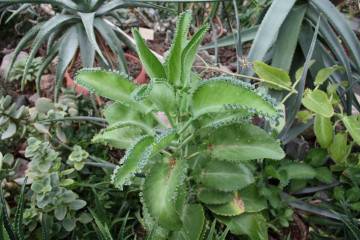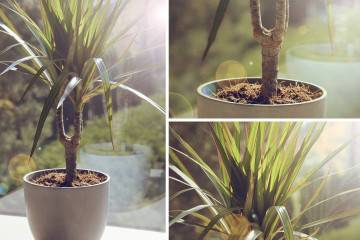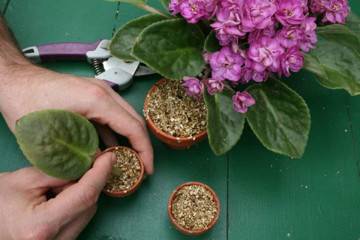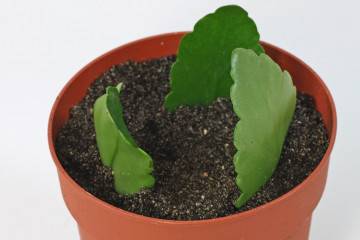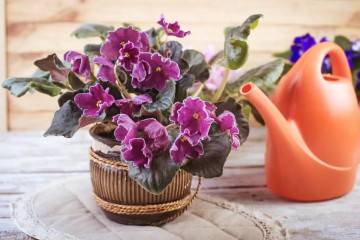How to transplant a violet into another pot step by step
Content:
Indoor flowers can complement the interior of the house and add bright notes. Violets are especially popular today. These are small plants with juicy green leaves and bright pink, white, yellow inflorescences. This flower requires close attention from the owner, and the key to its active development is the regular replacement of the soil and the change of pots. The article discusses the most common question, how to transplant violets correctly and not harm them.
Why transplant violets
With competent and planned care of indoor violets, flowers will delight their owner with lush, beautiful greenery and abundant flowering.
Briefly about proper plant care
Before transplanting a violet, you need to choose a place where the pots with this plant will be placed. It is important for him to provide the maximum amount of daylight, while bright sunlight should not fall on his delicate leaves. Otherwise, ugly burns will appear on them over time.
The temperature in the room should not drop below 20-22 ° C. Drafts should be avoided when ventilating. They will not ruin the flower, but over time, beige spots may form, significantly impairing the appearance.
Another important item in the care is watering. The water is preliminarily defended for 2-3 days, then boiled. This is necessary to remove chlorine and excess salts. The water temperature should be at least room temperature, and if in winter the pots are on a rack under the lamps, it is preheated.
As the flowers grow, they are transplanted.
What will the plant give a transplant
It is not enough to plant this houseplant in a pot and wait for flowering, it can outgrow. He needs a regular transplant. Over time, the violet can grow, it will become cramped in the pot, and the rapid growth will noticeably slow down. In the worst case, the owner may observe the slow death of the room beauty. The annual transplant of violets promotes the active growth of new leaves and the formation of buds.
The main methods of transplanting violets
When the owner decides to take a crucial step, he needs to study the basic rules and stages of how to transplant a violet at home step by step. Below are 3 options, and it is also described in what situations they are recommended.
Partial soil replacement
A partial change of land is sufficient in most cases. To make sure of this, you need to water the violet well beforehand. If at the same time the earth does not stick to the hands, but freely moves away from the walls of the container, then you need to fill up the earth. To do this, you need to get the flower and shake off the soil without affecting the main lump.A violet is placed in a larger container, and the free space is filled with new soil.
Complete soil replacement
This option is chosen in case of root rot, with significant exposure of the stems, as well as acidification of the soil. After the violet was taken out of the pot, the earth is shaken off it as much as possible. If the roots are damaged, they are carefully cut off, and the cut points are powdered with crushed coal. Depending on the volume of the roots after the completion of the procedure, they are determined with the size of the pot.
The main advantage of this method is that it is possible to inspect the roots, remove damaged areas and replace the soil.
Transshipment
This method is mainly used when a flower transplant is urgently required, namely:
- for children with a poorly developed root system;
- for a flowering plant;
- if the rosette is 3 times the diameter of the pot.
To do this, take a new pot and pour a 2-3 cm drainage layer downward. Before planting violets, an old pot is placed in the center to make sure that it is already a couple of centimeters new. Only in this way can you increase the volume of the flowerpot, and not immediately plant it in a huge one. Next, the root with a lump of earth is placed in the selected pot, and the empty space to the walls is filled with earth.
Step-by-step instructions for transplanting
Saintpaulias are considered to be demanding plants. Therefore, not knowing how to plant a violet correctly, and having done it at random, you can not wait for flowering and active growth.
Requirements for pots
The choice of a suitable pot begins with the material. For violets, clay and plastic are best suited. Plastic containers have the following advantages:
- affordable price;
- long service life;
- the possibility of washing;
- light weight.
However, these flowers need constant airing of the soil. Plastic walls do not allow air to pass through, but the problem can be solved. It is enough to choose pallets with a cruciform bottom or cut small holes yourself.
Clay pots are in demand among experienced flower growers. They note that the plant feels much more comfortable in them. Natural material contributes to stable ventilation of the root system.
Also, such a purchase will significantly hit the budget. In addition, beginners in floriculture should consider the weight of the clay product. If the flowers are grown on racks, then the pots will put a significant strain on the shelf and hardware.
Next, you need to choose the option that suits the size. For the smallest flowers, seedlings and miniature varieties, it is recommended to buy containers, the diameter and height of which does not exceed 5 cm. As they grow, they are transplanted into a 7 × 7 cm pot. The largest is 9 × 9 cm. It is used for an adult plant.
Soil composition
Soil requirements:
- ease
- moisture and air permeability;
- the presence of mineral components: phosphorus, potassium, nitrogen;
- acidity ranging from 5.5 to 6.5;
- the absence of pests and the presence of a favorable microflora.
Of course, you can buy ready-made soil specifically for violets in the store. However, many experienced growers note its increased acidity and prefer to make the mixture on their own.To do this, mix the following components in a ratio of 2: 2: 1: 1: 1:
- leafy earth (in other words, rotted humus);
- turf;
- peat;
- perlite, vermiculite or sphagnum moss;
- river sand.
Preparation of seedlings
Violets can be transplanted as the root system develops in the cuttings. Thus, when their length reaches about 2-3 cm, they are rooted. After about a month, each such leaf develops small bushes - children. They begin to independently receive nutrients from the ground, and the mother leaf dies off. When the bushes grow large enough, you will have to think about how to plant a violet.
It is recommended to plant each outlet in separate containers. For this, the earth is moistened to facilitate the process of reaching. They need to be carefully separated, and the cut points must be treated with crushed coal. Then they are planted in a previously prepared container and sprinkled with earth.
In the early days, the earth is moistened with a spray bottle. When spraying the soil, water should not fall on the leaves.
After completing the procedure, the flowers are placed in places where they will continue to grow. From the moment the violet is rooted, care is carried out as for an adult specimen.
Is it possible to transplant flowering violets: process features
Planting a flower during flowering is not recommended. However, there may be situations when this event is extremely necessary:
- infestation with parasites;
- putrid smell of soil and damage to the root system;
- oversupply of fertilizers;
- destruction of the pot.
During the flowering period, the violet spends a lot of energy on laying buds, filling them with nutrients for the formation of seeds. After transplanting, she will not have enough strength to restore roots, adapt and bloom. The flower may die. Therefore, in an emergency transplant, it is recommended to remove the pedicels with buds and blossoming flowers.
Post-transplant care
After the procedure, the violet needs full care.
Watering
On the first day, the earth is moistened with a spray bottle. Then you can water it in the usual way after a week.
In 5-6 days, the damage on the roots heals, and the flower is ready for the usual rules of care.
Lighting
In the early days, the pot is placed on the western or northern windows. The leaves should receive maximum light, but they are afraid of the sun. If the day is short, artificial lighting is recommended. Providing the flower for 10-12 hours with sufficient light and good rest at night, the accelerated adaptation process will be noticeable immediately.
Top dressing
It is not recommended to fertilize the soil immediately after transplanting. The supply of nutrients in the soil should be enough for about a couple of months. But the deficiency of macro and microelements of Saintpaulia begins to experience earlier. Therefore, the first feeding is carried out in a month.
How to avoid possible mistakes
Before planting a violet, you need to pay special attention to the planting container, it should not be too spacious. In this case, it is preferable to choose flat models.
Next, pay attention to the ground. Purchased, or it was prepared on its own, a month before the proposed transplant, it is treated for parasites.This can be done using a concentrated solution of potassium permanganate or by heat treatment in an oven at a temperature of about 100 ° C. As a white bloom or odor appears, the soil is changed urgently.
When is it better to transplant indoor violets
You need to transplant the flower regularly, but here it is important to observe the time limits.
Age and stage of development
You should not carry out the procedure at the time of flowering. This stage is considered to be an indicator of wellness. It is recommended to wait until the end and transplant the flower. Interrupting this stage of development, you can permanently deprive yourself of the joy of contemplating bright beautiful inflorescences. However, do not neglect the emergency transplant. In this case, the transshipment method is used.
Auspicious days calendar
Cold winters are not the best time to transplant. Daylight hours are short, so it will be difficult for the plant to adapt to new conditions. In summer, it is permissible to transplant a violet, but if the weather is hot since the beginning of June, then it is better to postpone the procedure until autumn. The most optimal time is spring and autumn, but flowers may require additional lighting.
Also, we must not forget about the lunar calendar. In this case, there is no clear reference to dates, since it changes annually. However, it has been noticed that the greatest success can be achieved when planting and transplanting Saintpaulias to the growing moon at the very beginning and end of February.
Periodically replanting the violet to a new place, the grower renews the soil, which over time loses its nutrients. It gives vitality and nourishes with minerals. So the flower will grow for a long time and regularly delight with its lush bright flowering.



